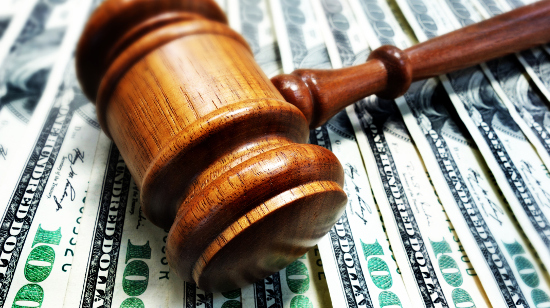Do SCOTUS's Annual Disclosures Differ from Those of Lower Court Judges? Sort Of.
 Lower court judges and Supreme Court justices are required by law — the 1978 Ethics in Government Act — to fill out financial disclosure reports, Section I through Section IX, every year and deliver them to the Judicial Conference’s Committee on Financial Disclosure by May 15, though they’re allowed one 90-day extension.
Lower court judges and Supreme Court justices are required by law — the 1978 Ethics in Government Act — to fill out financial disclosure reports, Section I through Section IX, every year and deliver them to the Judicial Conference’s Committee on Financial Disclosure by May 15, though they’re allowed one 90-day extension.
Lower court judges in 1979 sued to have the disclosure requirement excised from EIGA, but a CA5 panel kept it in place, and SCOTUS denied cert. (p. 344 of PDF; also here), so the requirement stands.
Although the forms judges and justices fill out each year are the same, there’s some departure between them in term of what happens when an error is identified:
1. If a reporter or member of the public finds out that a lower court judge received a gift — say a $10,000 honorarium — from a litigant or from anyone, really, and doesn’t list it on their disclosure report, that judge is subject to a broad set of sanctions, according to the 1980 Judicial Conduct and Disability Act — an investigation by a chief justice or judicial council, cases taken away, private reprimand, public censure and more. If a justice receives the same honorarium and fails to report it, there’s no recourse or reprimand save impeachment and removal, which is unlikely ever to happen.
2. To take this one step further, though there is a section on the disclosure report of judges and justices for listing gifts, the law that codified gift rules, the 1989 Ethics Reform Act, does not technically apply to SCOTUS. So any gifts listed here are done so out of the goodness of the justices’ hearts. (See link from Jan. 1991: “The [gift regs] do not apply to officers and employees of the Supreme Court. Acting at the request of the Chief Justice, […] Members of the Court resolve that officers and employees of the Court will comply with the substance of the Judicial Conference Regulations, subject to [exceptions]…”).
3. When a lower court judge attends a privately-funded seminar, that seminar’s funders and speakers are supposed to be listed on a U.S. Courts webpage that’s updated every day and goes back three years. This page does not offer complete information (you’re shocked, we can tell), but more to the point, it does not include privately-funded seminars that are attended by Supreme Court justices. (Justices are listed incidentally at times – i.e., if they speak at a seminar at which lower court judges are also speaking.)
4. Finally, when the judiciary itself hosts a conference that costs them more than $10,000, they’re required to list it on a webpage that’s updated once annually. There is scant information about attendees here, but none of these conferences ever reflect justices’ attendance, whereas lower court judges’ attendance can often be gleaned — see, e.g., “Third Circuit Judicial Conference,” line 3, FY19 report.